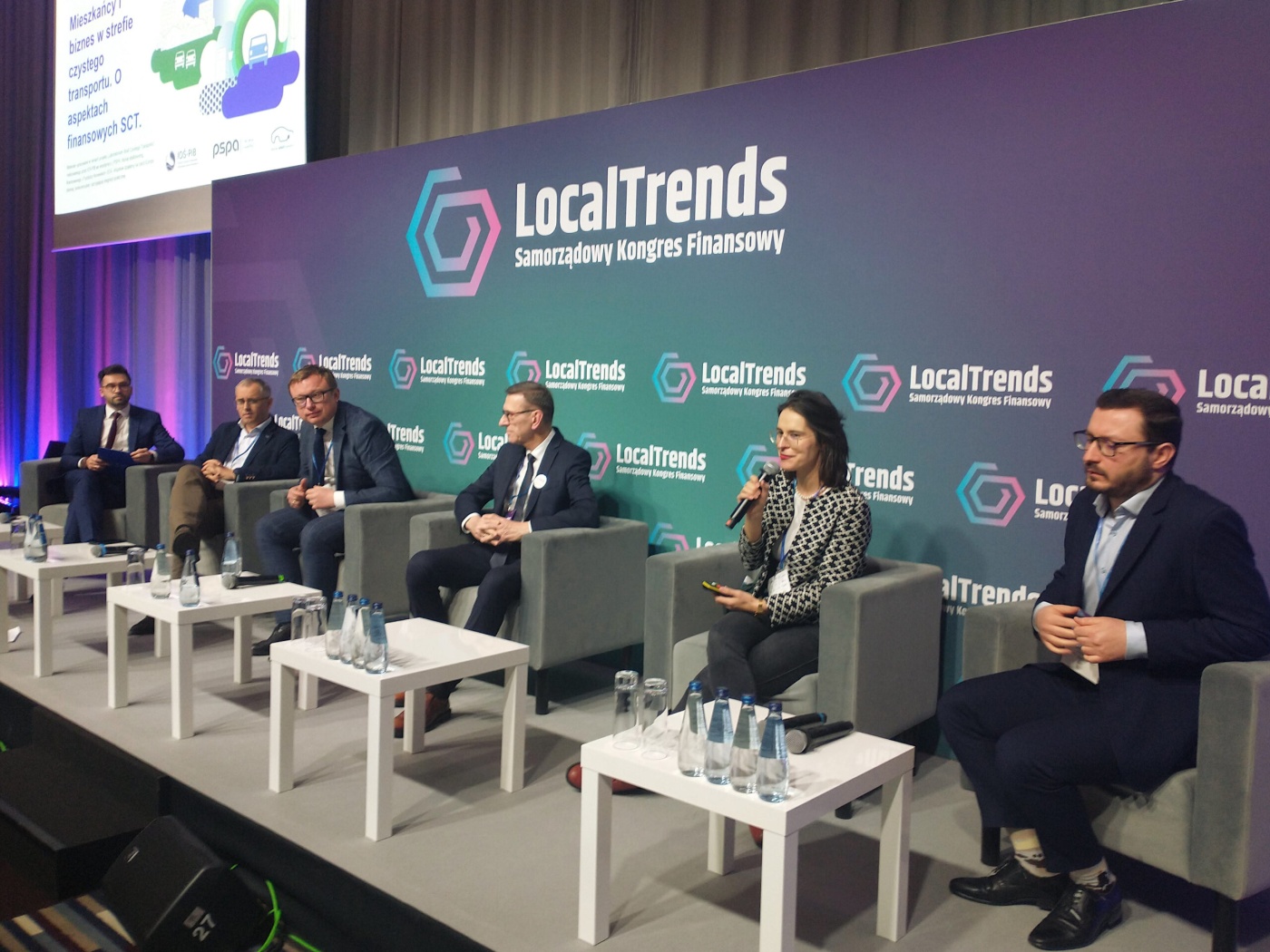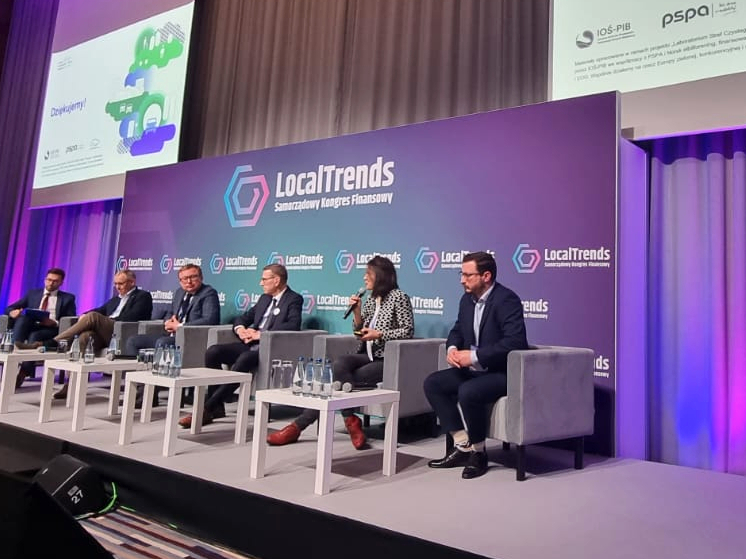This website uses cookies so that we can provide you with the best user experience possible. Cookie information is stored in your browser and performs functions such as recognising you when you return to our website and helping our team to understand which sections of the website you find most interesting and useful.

Low Emission Zones are not only about restrictions – it is crucial to offer convenient transport alternatives to the car, as electromobility is an important, but insufficient element of an efficient LEZ – this is one of the conclusions of a debate organized as part of the “Laboratory pf Low Emission Zones” project. The meeting with local government officials, as well as representatives of NGOs was held on April 3rd as part of the “Local Trends” Local Government Financial Congress in Sopot.
Low Emission Zones serve primarily to reduce the emission of harmful substances. It is very difficult to find opponents of healthier air – at the same time, unfortunately, it cannot be denied that in Poland LEZs are often perceived mainly as a hindrance to everyday life. How can this image be changed?
– It should be emphasized that the aim of Low Emission Zones is actually cleaner transport, rather than fully clean – i.e. zero-emission – transport. They do not completely exclude internal combustion vehicles and will not exclude them as part of the gradual tightening of emission requirements – noted Nina Bąk of T&E Transport & Environment, national coordinator of the Clean Cities campaign. Crucially, the common belief that the introduction of a clean transport zone will harm, for example, entrepreneurs operating in its area, is not always reflected in facts. Research conducted in Madrid has shown that the reduction of car traffic does not prevent customers from accessing shops and services. Turnover in the LEZ had not fallen – in some industries it had even increased. It turns out that the positive impact of car traffic on business is overestimated, and entrepreneurs will successfully function in LEZs – of course, provided that continuity of supplies is maintained. For some businesses, such as cafes and restaurants, less traffic can actually attract more customers.
It is also worth remembering that the purpose of creating Low Emission Zones is not to put pressure on residents to replace combustion engine cars with electric ones but to reduce pollution – and the alternative could be better access to public transport, preferably low-emission. A well-organized public transport network and developed infrastructure for bicycles, scooters and pedestrians have tangible benefits – residents do not have to spend more time traveling for the sake of cleaner air, because these means of communication are simply faster than private cars. – During the development of the tram network in our city, we checked which means of transport are the fastest. It turned out that bikes were the fastest, followed by trams and busses, while cars were the slowest – mentioned the President of Olsztyn, Piotr Grzymowicz.
Above all, however, LEZ is not a treatment for the symptoms of the problem of air pollution, but a complex system of solutions that bring specific results – provided that they are properly planned and integrated. When preparing to establish a Zone, one must realize that – whether we like it or not – the average Pole does not accept electric cars, which are perceived as accessible only for the rich. There are many negative stereotypes surrounding electric vehicles, partly because older technologies were more unreliable and less safe than those currently available on the market. Business can help change their perception – this does not apply solely to those who manufacture EVs and the infrastructure for their maintenance. – Companies can show private users that if this technology is chosen by entities whose existence depends transport, then it can be trusted – assessed Nina Bąk.
How do manufacturers of charging infrastructure electric vehicles view Low Emission Zones? – I treat electromobility as one of the elements that can support the functioning of the Zones – support, because LEZs are not about replacing combustion engine cars with EVs – Rafał Czyżewski, CEO of GreenWay Polska, echoed the statements of his interlocutors. – Electric vehicles certainly have a future in the city, but the construction of charging points cannot be treated only as an opportunity to profit from the sale of the land on which they will stand – it must be part of a broader strategy of developing clean transport – he emphasized.
Is it worth it for local governments to take advantage of the possibility of establishing Low Emission Zones? According to the Mayor of Olsztyn, yes, but only after thorough preparation. – In 2017, we conducted a cost-benefit analysis of the introduction of a LEZ based on analyses of intelligent traffic control systems and pollution studies. The most congested and polluted intersections and routes cannot simply be excluded from traffic – alternatives must be proposed, including bypasses, and this requires time – assessed Piotr Grzymowicz. – We will certainly move towards the introduction of a Low Emission Zone, but only after providing appropriate alternative communication routes – declared the President of Olsztyn.

